#Tool-making evolution
Explore tagged Tumblr posts
Text
the Power of Human Intelligence: Beyond Brain Size and Into the Cognitive Marvels 23
In the intricate tapestry of human evolution, the enigma of intelligence takes center stage. Contrary to popular belief, it’s not merely about the size of our brains but the fascinating dance of cognitive circuitry that propels our intellect. Let’s embark on a journey through the corridors of the mind, exploring the nuances of human Intelligence. Understanding the Brain’s Symphony The Intricate…

View On WordPress
#Brain size myths#Cognitive circuitry#Digital age challenges#Evolutionary milestones#General public awareness#Genetics and intelligence#Human intelligence#Intelligence in the modern world#Music and cognitive brilliance#Nature vs. nurture#Neuroplasticity#Screen impact on cognition#Small-brained geniuses#Social intelligence#Tool-making evolution
0 notes
Text

Viktor blocks your escape, locking you between him and the bathroom wall - "And you thought it was a funny prank, to close the lights and steal my towel?"
Yeah, maybe it was. You'll be regretting it soon, though. ^._.^ฅ
#arcane#arcane viktor#arcane fanart#viktor league of legends#viktor#au#viktor arcane#digital art#art#paint tool sai#viktor arcane fanart#viktor fanart#illustration#viktor x you#never been so happy with a drawing before#viktor makes me better#glorious evolution of my artistic skills#sorry not sorry#vik by nem
250 notes
·
View notes
Text
... Okay yeah, this is gonna be a fun mod to make 👁️👄👁️
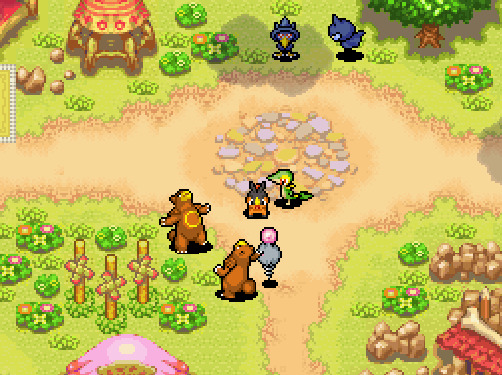
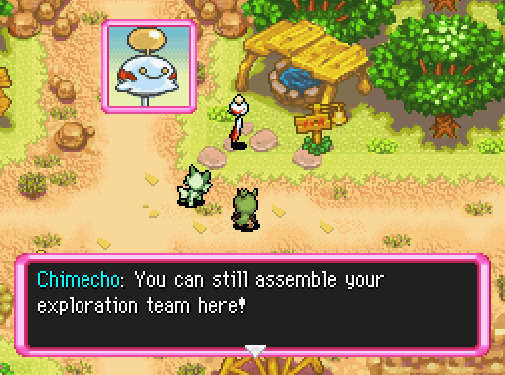
(Sprites from the pmd sprite collab repository and credits as follows: NeroIntruder, Emboarger, NikolaP, Emmuffin)
#pokemon#pmd#pmd eos#moving past my popplio mod to try to make an all starters mod + im DELIGHTED by the tooling skytemple has to pull up sprites from the repo#there's a few which don't have sprites yet (mostly in the case of evolutions but also sobble and fuecoco) so i sadly can't add them yet#i can do portraits myself fairly good but uhh. not full sets of overworld sprites from scratch dadasfsgd#pyro modding
66 notes
·
View notes
Text

Introduction to Retro Reflective Sheets
Retro Reflective Sheets have emerged as a sport changer in signage and traffic management. These specialized documents play a vital role in ensuring visibility and safety in load handling from road signs and markings to action grid pages What they mean, and their copies are critical to their greater visibility all recognition and impact.

History of Retro Reflective Sheets
The adventure of Retro reflective sheets lines returned to the mid-twentieth century whilst modern minds sought answers to improve nighttime visibility on roads. Initially evolved for military purposes, unfashionable-reflective materials gradually found their manner into civilian applications, mainly in visitors signage. Over the many years, improvements in technology have propelled the evolution of retro reflective sheets, making them imperative components of modern-day infrastructure.
How Retro Reflective Sheets Work
At the coronary heart of retro reflective technology lies the precept of unfashionable reflection, wherein mild is directed returned towards its source. This phenomenon is finished via the strategic association of micro prisms or glass beads at the floor of the sheet. When illuminated by headlights or other mild sources, these microscopic structures jump the light lower back to the observer, making sure most visibility even underneath low-light conditions.
Video Player
00:00
02:00
Applications in Signage
Retro reflective sheets locate massive use in numerous signage packages, which include road signs and symptoms, lane markings, and hazard indicators. Their excessive-visibility houses lead them to essential for directing motorists and pedestrians alike, especially at some stage in midnight or damaging weather conditions. Additionally, retro-reflective sheets are employed in creation web page signage to alert people and motorists to capacity hazards.

Role in Traffic Management
In the area of Traffic Management, Retro reflective sheets serve as priceless tools for reinforcing safety and efficiency. Whether applied to site Traffic cones, barricades, or delineators, those sheets significantly improve the visibility of transient traffic manage gadgets, thereby lowering the threat of accidents and site visitors congestion. By making sure clear demarcation of lanes and hazards, retro reflective sheets make a contribution to smoother traffic go with the flow and less collisions.

Advantages of Retro Reflective Sheets
One of the number one advantages of retro reflective sheets is their fantastic sturdiness and durability. Unlike conventional signage substances, including paint or vinyl, retro-reflective sheets withstand harsh climate conditions and extended publicity to daylight with out fading or deteriorating. Additionally, their lower maintenance requirements translate into savings for municipalities and transportation agencies. From an environmental perspective, the retrospective paper offers sustainability benefits by reducing waste by reducing the need for appropriate replacement.
Challenges and Limitations
Despite their several advantages, retro reflective sheets are not without challenges. Maintenance is a essential aspect, as amassed dirt or debris can impair their reflective homes through the years. Additionally, intense weather situations, which include heavy rain or snow, might also briefly lessen visibility, necessitating proactive cleaning and maintenance efforts. Additionally, ensuring compliance with safety requirements and guidelines creates a situation that requires planning for those involved in signage and site Traffic management.
Future Trends and Innovations
The future of retro reflective era holds promising traits aimed toward similarly improving performance and functionality. Ongoing research seeks to validate best practices and manufacturing processes to improve product sustainability and efficiency. Additionally, blending retro reflective sheet with smart technology, as well as connected cars and IoT systems, opens up new possibilities for enhancing visitor management and security.
Case Studies
Numerous case research exemplify the actual-global impact of retro reflective sheets in enhancing street safety and site visitors management. From busy urban intersections to remote rural highways, those examples highlight the versatility and versatility of pre-assessment signals Whereas reading successful resource management and satisfactory practices, stakeholders can gain valuable insights to optimize their individual signal management and investment in projects.
Regulations and Standards
Adherence to hooked up rules and requirements is paramount inside the deployment of retro reflective sheets. Government organizations and industry stakeholders collaborate to increase pointers ensuring the steady software and performance of retro-reflective signage. Compliance with those standards no longer handiest ensures the protection of avenue customers however also mitigates legal risks and liabilities related to non-compliance.
Environmental Impact
In an era of growing environmental focus, the environmental impact of retro reflective sheets warrants interest. While those materials offer durability and durability, end-of-lifestyles considerations, including recycling and disposal, are vital for minimizing their environmental footprint. Initiatives promoting sustainable practices, which include recycling applications and green substances, play a critical role in mitigating the environmental impact of unfashionable-reflective signage.
Comparative Analysis with Traditional Signage
A comparative analysis among retro reflective sheets and traditional signage substances highlights the superiority of the previous in terms of visibility, durability, and value-effectiveness. While conventional paint or vinyl signage might also provide preliminary price financial savings, the long-time period blessings of retro reflective generation a long way outweigh the upfront funding. Moreover, the enhanced visibility and protection furnished by means of unfashionable-reflective sheets justify their good sized adoption in modern signage programs.
Educational Initiatives
Educating stakeholders and the general public approximately the advantages and right usage of retroreflective sheets is critical for maximizing their effectiveness. Public focus campaigns, education packages, and academic materials help disseminate information approximately the significance of retro reflective signage in enhancing street safety and site Traffic management. By empowering people with information and resources, those tasks foster a lifestyle of safety and duty at the roads.
Market Trends and Growth Prospects
The market for retro reflective sheets is poised for substantial boom within the coming years, driven by increasing investments in infrastructure and transportation tasks international. Emerging economies, mainly, are witnessing fast urbanization and growth of transportation networks, fueling call for for first-rate signage and traffic management answers. Innovations in materials and era are anticipated to similarly stimulate market increase, developing possibilities for producers and suppliers inside the retro reflective industry.
Conclusion
Retro reflective sheets have revolutionized the fields of signage and traffic management, supplying unparalleled visibility and protection benefits. From road signs and symptoms to site visitors cones, those specialized materials play a vital function in guiding and protective street users, in particular at some stage in nighttime or destructive climate situations. As technology continues to advance and infrastructure wishes evolve, retro-reflective sheets will remain integral gear for making sure green and safe transportation structures worldwide.
Unique FAQs
Are retro-reflective sheets only used for road signs? Retro reflective sheets have diverse applications beyond road signs, including construction site markings, parking lot signage, and temporary traffic control devices.
Do retro-reflective sheets work in all weather conditions? While retro reflective sheets are designed to enhance visibility under various conditions, extreme weather events like heavy rain or snow may temporarily reduce their effectiveness.
Are there regulations governing the use of retro-reflective sheets? Yes, government agencies and industry organizations establish regulations and standards to ensure the proper application and performance of retro-reflective signage for road safety.
How long do retro-reflective sheets typically last? The longevity of retro reflective sheets depends on factors such as quality, exposure to elements, and maintenance practices, but they are designed to withstand years of use without significant degradation.
Can retro-reflective sheets be recycled? Yes, many retro reflective materials are recyclable, and there are recycling programs available to properly dispose of end-of-life signage materials while minimizing environmental impact.
#Retro Reflective Sheets have emerged as a sport changer in signage and traffic management. These specialized documents play a vital role in#and their copies are critical to their greater visibility all recognition and impact.#Retro Reflective Sheets#History of Retro Reflective Sheets#The adventure of Retro reflective sheets lines returned to the mid-twentieth century whilst modern minds sought answers to improve nighttim#unfashionable-reflective materials gradually found their manner into civilian applications#mainly in visitors signage. Over the many years#improvements in technology have propelled the evolution of retro reflective sheets#making them imperative components of modern-day infrastructure.#How Retro Reflective Sheets Work#At the coronary heart of retro reflective technology lies the precept of unfashionable reflection#wherein mild is directed returned towards its source. This phenomenon is finished via the strategic association of micro prisms or glass be#these microscopic structures jump the light lower back to the observer#making sure most visibility even underneath low-light conditions.#Video Player#00:00#02:00#Applications in Signage#Retro reflective sheets locate massive use in numerous signage packages#which include road signs and symptoms#lane markings#and hazard indicators. Their excessive-visibility houses lead them to essential for directing motorists and pedestrians alike#especially at some stage in midnight or damaging weather conditions. Additionally#retro-reflective sheets are employed in creation web page signage to alert people and motorists to capacity hazards.#Role in Traffic Management#In the area of Traffic Management#Retro reflective sheets serve as priceless tools for reinforcing safety and efficiency. Whether applied to site Traffic cones#barricades#or delineators#those sheets significantly improve the visibility of transient traffic manage gadgets
2 notes
·
View notes
Text
Thinking about one of the things I rebloged about consuming media, and I just- I read something that most brains first read a statement as truth, and then have to figure out the lie. Which is at least true for me, and it’s worse that my brain doesn’t always do that second step. Especially tired? And we live in an age with so much information going by that eventually some shit gets in, cuz it’s just hard to always be on guard. And I wish my brain didn’t do that, and I try to be as aware as possible, but it’s just always going.
#I’ve been trying to make my feed healthier but it’s always a matter of what I can actually notice#i am glad I was taught spot the lie when I was younger#tho the lie was sometimes evolution but- we make our tools better with material we find along the way
2 notes
·
View notes
Text
I love science fiction and speculative biology and evolution and such, but so much of it has just… godawful characterization stemming from bullshit reddit evopsych
#I get that it comes pretty naturally with the genre- if you’re really focused on evolution as a world building tool and all#you’re naturally going to try and conceptualists the psychology of your sophonts in evolutionary terms#but godamn this does not make it any less insufferable to read#this is why I stopped reading fellow tetrapod btw#media#speculative biology#hawk.txt
1 note
·
View note
Text
Best Multimedia Iinstitute in Rohini
#Advanced Diploma in Multimedia Training institute in Rohini#The Power of Multimedia: A Transformative Tool in Communication#In the modern world#multimedia has become an integral part of our daily lives. From social media platforms to educational tools and entertainment#multimedia engages us in ways that text alone simply cannot. But what exactly is multimedia#and why has it become so essential in communication today?#Defining Multimedia#At its core#multimedia is the integration of different forms of content#including text#audio#video#graphics#and animations. The key to multimedia is its ability to combine these diverse elements to create more engaging#interactive#and impactful experiences. Whether it’s a YouTube video#a podcast#an infographic#or a dynamic website#multimedia enriches the way we consume information#making it more accessible and memorable.#The Evolution of Communication#Historically#communication was confined to the written word or spoken language. But with the advent of technology#multimedia has revolutionized how we interact with information. For example#in education#multimedia has been used to create immersive learning experiences#offering students the opportunity to interact with content through videos#virtual simulations#and interactive quizzes. This helps cater to different learning styles
0 notes
Note
Perhaps you've talked about this before, but what do you view as D&D's "comfort zone" as far as the rules expectations are concerned? If I'm playing a 5e game with my friends, what kinds of stories are generally going to be most enjoyable to run with the ruleset as it exists already?
Broadly speaking, D&D's narrative comfort zone revolves around stories about small groups of highly skilled weirdos whose core competences lie somewhere in the vicinity of "hurting people and breaking things", trying to achieve a goal that can be accomplished by travelling from point A to point B (and hurting or breaking whatever they find when they get there). This journey will take the form of a picaresque series of set-piece encounters, characterised by the ever-present threat, if not necessarily the eventuation, of violence, in which various only-semi-avoidable horrible things will happen to the group – potentially up to and including death – and they will do horrible things to others in turn. Though the framing of this series of set-pieces may involve some sort of mystery or intrigue, the rules don't care about that dimension of the story's premise and offer few tools for engaging with it; rather, the spotlight lies on the logistical dimension of the journey – i.e., how the group marshals the limited resources available to them in order to accomplish the getting-from-point-A-to-point-B part.
(Some folks reading this may be thinking "wait, you just described a completely standard RPG", and given the influence of D&D on the evolution of that standard, you're not wrong; however, if that was your reaction, it may be worthwhile to back up and count how many weirdly specific assumptions about the shape of the game's story I just outlined – there may be a few you didn't realise you were making!)
#gaming#tabletop roleplaying#tabletop rpgs#dungeons & dragons#d&d#game design#violence mention#death mention
2K notes
·
View notes
Text
F!reader spoils Lil Dragon!Zhongli... at first | Fluff🧸 (with dragon)+ 🔞 (with human Zhongli)


🎨by: @nagarnia_art and @JeanGreyCG
Summary: You're doing some research in the woods, looking for certain minerals, when you feel some tiny tiny eyes staring at you. After Zhongli morpps from a dragon to a human, things get a bit... hot...
Tw: with human Zhongli smut 🔞, PIV. Insinuations of breeding season, with dragon Zhongli just some cute Dragon behavior bc I ended up traumatized after writing some angst.
•┈┈┈┈┈┈┈┈┈••✦ ● ✦••┈┈┈┈┈┈┈┈┈•
Your research is going well. Your reports to the Fontaine Science Institute were successful during your last expedition, earning you praise from your superiors. You have been living in Liyue for over six months. After learning about minerals that can emanate energy, you sought out information to educate yourself on the subject.
The rocks in Liyue seem to have a memory, possibly due to the work of their Archon or as a natural result of high evolution and energetic vestiges from ancient wars.
Zhongli, the Parlor consultant, had told you about a spot at the foot of a valley that might interest you, and you were amazed. You had no reason to doubt the man's wisdom. You had formed a deep bond of friendship with him because you admire his extensive knowledge about everything. You set off almost immediately. He had offered to accompany you, but you had refused because you prefer to do your research alone, surrounded by nature and away from the attractive distraction that Zhongli could become.
Your friend is attractive, in a way that you tried to express in your letters to your friends at Fontaine, but never succeeded. Your banal words and names do not do justice to the physique of this man of unshakable character, steely sense, and tenacious gaze. You could not bear to make a mistake in his presence during the expedition, not because you were clumsy, but because his figure moved your senses, your ground, and betrayed your own perceptions.
So, as you walk through a pleasant area of foliage, covered by the fierce, scorching rays of the sun, you decide to let your guard down, to take off your jacket and your gloves. You use a ribbon to tie up your hair as you walk on, arriving at the place Zhongli had shown you beforehand. The passage is strangely comfortable, very suitable for a quiet investigation, full of strange figures of small rocks of irregular and curious shapes.
Under the canopy of large trees, you spread out your arsenal of tools on the grass, put on your protective visors, and get to work. Sequencing the rock profile takes little time, your agile skills allowing you to avoid unnecessary pauses or clumsy backtracking typical of an amateur. Then you take the samples, tiny particles that do not alter the correct and productive nature that King Geo has protected for years, and while you wait for the filtering to finish, a strange sensation runs down your spine.
You had let your guard down during your experiment, letting the peaceful appearance of the place convince you, something very unprofessional on your part. So you turn to the side and feel a presence. Among the bushes, you spot a pair of curious little spheres, and you jump as the leaves rustle in the presence of an unknown being.
A deep relief washes over you as the creature in question appears on the scene. A small dragon, microscopic in physiognomy compared to adult forms, with curious eyes and a golden tail twisted into a spiral. Its little paws make furrows in the ground, its face dejected, as if it had been caught doing something illegal.
"Little one, have you been watching me all this time?" You ask the cute little creature, who hides his head between his front paws, realizing he can't do it with his tail, which isn't long enough.
"Come here, don't be afraid of me," you whisper, approaching it cautiously, holding out your hands.
The dragon gathers itself in its own anatomy, growling low, sounding almost like a common cat, you can't help but laugh at it. You bring your fingers up to the growling pellet and stroke its head, right between its underdeveloped horns. You notice a puff of breath coming from the little guy's nose.
"How cute, you liked that, didn't you?" you laugh as you stroke his head and then his back, causing the miniature dragon's tail to wag.
"Come, sit with me, we'll have to wait a long time until the filtering is finished," you take him in your hands, on your palms.
"Wow... I've never seen one of your species so small... and those scales," you comment, bringing your face close to the reptile's, "I'd swear you have very, very soft skin, you're very rare, uh," you add, while you turn to your tools, which emit a strange smell.
You leave the dragon on the ground and approach your machinery, no, nothing out of place... well, now you can turn your attention to the little guy who... what is he doing?
You notice the tiny creature rubbing against your foot, making strange squeaks. It's... it's mating with your shoe? You burst out laughing and shake your foot, pushing it away and picking it up again.
"You horny little bugger," you say, poking him in the nose, "I forgot that your species is in mating season. I regret to inform you that you will get nowhere with me, I am not of the same species... ours is impossible."
A sad sigh escapes from the little animal's chest, and you notice how its whole face becomes depressed, its horns and ears seem to droop in deep disappointment.
"Don't cry," you say, putting it on the ground in the grass and lying down in front of it, "we can play if you want, to distract you a little”.
That got his attention, because he looked at you again. He walks up to you with his little paws and puts one on your nose, he starts to sniff you with that little button in the middle of his little face.
"Ohhh... do you want a little kiss?" you ask, flooded with tenderness, "I would do anything to make you happy" you say, placing a tender kiss on the dragon's forehead. Is like a puppy...
The dragon retraces his steps, accelerating and rolling his head in madness. You see him writhing in place, as if he had suddenly fallen ill, and then... poof... a golden flash and a trail of smoke, ike the one he had just exhaled through his nose. A faint wave of heat and a faint smell of sulfur as a figure began to form behind the column of smoke.
You straightened up in your seat as the column disintegrated, revealing the very embarrassed image of Zhongli, covering his mouth as he coughs, with traces of smoke and golden flames escaping from his throat.
He is wearing little clothing, a tunic of the same color as the skin of the dragon you spoke to earlier... is that perhaps...?
"You," you point an accusing finger at Zhongli, and he looks at you with flushed cheeks, "what was that? Aren't you going to say anything about it?" you say to the man, appearing to be annoyed, although in reality, seeing him in that outfit has aroused something pleasurable in you.
"Well?" you insist.
"Are you going to give me that kiss or?" he interjects, his voice still weak and embarrassed.
His embarrassment fades for the next hour, during which he relentlessly thrusts himself into you, waiting for your boring explorer machine to end.
The filtering of the rocks continues, the particles falling into the vessel like sand in a crystal clock. The small machines emit tiny clicks and a faint plume of smoke and gas. The rumble of the cycle's drumbeat advances in rhythm with your moans as you feel Zhongli sink deep into you.
You lie on the grass, your pants and panties around your ankles, your hands on your head clinging to the foliage, your waist encircled by Zhongli's large hands holding you steady so he can work his way into your pussy. You feel his pelvic bone against your center, his balls against your skin, and then he pulls away to enter again. Gently, lovingly, afraid to break you and hurt you. He's painfully slow, but how good it feels.
You hear him make low, rasping noises as faint plumes of smoke rise from his nose, as when he looked like a dragon. His cock twists inside you, slapping against your cervix, massaging your wet, warm depths that mold to the shape of his member. You feel the warmth rush down your legs, an electric current coursing through every fiber of your limbs, your chest heaving in desperation.
The orgasm hits you both at the same time, decorating Zhongli's cock with a white ring as his cum spills into you like thick ropes from his ecstasy. He pulls back your panties and pants, leaving a chaste kiss on your cheek.
"May I mark you?" he asks with a look of honor, his face sublime and devoted.
"Don't even think about it," you say, joining in, noticing the sadness in his eyes, "we weren't even supposed to do it. It was just supposed to be a kiss and that's it," you seem to scold him, though it's you who's scolding yourself for being so unseemly and impetuous, though damn... you've enjoyed it so much... ....
Sensing your hostile tone, Zhongli wraps himself up and immediately transforms into his small reptilian form.
"Please stop being so dramatic," you express, leaning against one of the tree trunks and letting out a laugh. "Come back... I don't want to wait alone," you say, crossing your legs and putting your jacket down.
Zhongli, the dragon, approaches you with short steps, due to the length of his small legs, and climbs onto your lap, where he rubs the fabric of your coat, nestling into the fabric to take refuge, and lets out a yawn before closing his eyes and settling down for a nap. You stroke his back and coo to the little creature, feeling him purr like a cat.
"How cute you are when you sleep," you laugh, stroking his nose, causing him to bite your finger, "did you just mark me without my permission?" You ask, but he just squeals and jumps off your lap, looking for a way to escape. You catch him with your coat and throw it at him like a fleeing rat, but he manages to escape and hide in the bushes... you don't see him again for the rest of the afternoon, but you know that when you return to Liyue Harbour you will demand an apology, an explanation... and maybe a round two.
#zhongli#zhongli x reader#genshin impact#genshin#genshin zhongli#zhongli smut#genshin impact smut#genshin smut#zhongli x
3K notes
·
View notes
Text
Born too early to explore the galaxy, born at just the right time to watch biologists make some buck wild discoveries about the evolution and classification of archaea
It’s crazy to me that modern genetics gives us the tools to figure out which clade within the Asgard archaea probably gave rise to the eukaryotes and allows us to pretty effectively sort many families of single celled organism in evolutionary history despite all this shit happening in the Precambrian and leaving basically no fossil evidence
615 notes
·
View notes
Text
Something I've noticed, and I want to write this up more formally at some point, is that a lot of the students I teach- mostly college freshmen, but some upperclassmen taking anthropology classes as a gen ed requirement- are far more interested in human evolution when it's framed as a story. Specifically, they don't care about Australopithecus afarenesis, they care about Lucy and Selam. They don't care about Homo ergaster/erectus, they care about Nariokotome Boy. They don't care about the Laetoli footprints- they care about the anonymous Australopithecus adult and child who made them.
I've noticed this take a sharp uptick since the pandemic. The students are so much better at learning when the thing they're learning about is couched in empathy. They're far more interested in narrative and emotion than they are in basic scientific fact, and that's what leads them to further inquiry. They don't care about when Neanderthals lived, but they care about their funeral practices, about how they appreciated beauty, how they took care of each other. They want something to care for, not just about.
I wonder- are other social sciences taking this approach? Could this approach be taken in harder sciences like chemistry and physics? Certainly biology could easily be framed with empathy.
More and more I'm seeing posts about how students are resistant to learning, and I have to wonder how much of that is information overload and how much of that is an inability to understand (on the professor side) how kids want to take in information. We're competing with TikTok and Youtube and all of these other platforms that give them chunks of info with catchy hooks and sounds. How can boring old facts compete? They can't. The old way of lecturing is dead at the undergrad level, quite frankly.
But that doesn't mean students won't learn or that they don't want to learn. It just means you have to tell them a better story. Students crave connection. They want to make sense of a world that... doesn't make a lot of sense sometimes. If we want them to think and write and engage, we need to give them the tools they need to connect with the world on a deeper level.
I think we'd all be better off if we took the time to introduce a little wonder and a little empathy into each of our lectures.
1K notes
·
View notes
Text
i am convinced that human evolution and development was centered around the basic up-grade from "i steal your resources" to "i steal your behaviors and concepts"
We got clever enough and we just started copying absolutely everything we observed just because now we could figure out how to copy concepts and things that other animals were doing
see that squirrel hoarding acorns for the winter? we can do that. okay now how do we make these acorns edible, cause they are poisonous to a number of animals and we don't do great with them either. What if you put them in the fire? or just on hot coals? what if you put them in water on hot coals and boil them? Oh if you soak them in cold water for 24 hours and maybe change the water a couple times you can totally eat them? YOINK storing acorns for winter is our idea now.
or, you ever seen a weaver bird do it's thing? if not i'll give you one guess what they do


or how about the tailor bird that uses spider silk to stitch the edges of a big leaf together to make a nest in

or sometimes they'll stitch a bunch of leaves into a little cup for a nest

like i'm not trying to downplay how clever it is to be the first humans to weave or sew, and indeed, being the first person to weave that anyone knew about probably happened many times throughout human existence but my conceit is that most if not all of those times was a human seeing something in nature that was basically weaving and going "i'ma do that, and get real good at it - i'ma take that concept and really make it mine"
like it wouldn't surprise me if humans got dogs because we saw how ravens were treating wolves and went "shit yeah, great idea - YOINK that's my idea now."
most of the things that we think of as special human skill or behavior can actually be found elsewhere throughout nature -- all over there are animals using tools, farming, ranching, building, etc.
my favorite primate behavioralist anecdote is a group of people studying tool use in chimps were spending their days in the bush logging the use of twigs to catch termites, and over the campfire at night they're like "it's so boring i wish they'd do something more impressive than this completely basic tool skill."
and one of them was like "actually... how do we know its not a difficult skill? has anyone tried to use a twig to catch termites and see?" and so the next day, like good little scientists, they went out and recorded their attempts at catching termites with twigs.
And lo and behold out of the whole group and all their attempts that day, only, like, a single termite was caught by a human, mostly by chance. Suddenly the whole situation flipped - they'd been thinking of it as basic unskilled tool use, but actually the chimps knew how to do something that none of them could easily figure out on their own - or even together as a group!
y'all, they had to go back to watching the chimps do it to figure out how. Think about that. University degrees, scientific minds, educated people... and they had to be taught how by the chimps.
It turns out there's a reason that young chimps will spend like a year closely studying how an adult is fishing for termites. You gotta select the right kind of twig or leaf stem, maybe you fray the end like a paint brush depending on particulars, you gotta have just the right poking and little shaking technique to provoke the termites into biting the twig, it's a whole thing. There's even regional/cultural differences in the general approach to termite fishing that are distinct between groups that live in different areas.
Now, wild chimps have been observed using objects as tools to fashion crude spears for hunting (it's the mothers doing it by the way, and slowly some of their kids have been growing up doing it, which will probably result in refinements and developments eventually.
ants do both farming and ranching. For real. Some species of ant grow a fungus they eat AND it's a domesticated fungus, like our corn, it can't actually reproduce and survive in the wild without the ants farming it. They maintain its growing conditions and feed it leaf litter mulch, and the fungus produces some kind of ant food idk i forget the details about that. But that's farming. They are farming a domesticated mushroom, basically. And other species of ant will maintain a herd of aphids; they'll move them from grazing area to grazing area, and protect them from predators, and they "milk" them for a liquid food substance and also every now and then they straight up eat one. That's ranching.
beavers sometimes have muskrat... tenants? pets? The muskrats low key pay rent by changing out the reed bedding they all use, and they live in the beaver's lodge with them and eat some of the food. So. idk
Some Tarantulas keep frogs as pets
anyway my point is, i think the true human skill that sets us apart is our ability deconstruct and reconstruct anything we see into something that is for us. Oh, you eat that? Now WE eat that. You have the perfect teeth to drill little holes in specific tree trunks to let the sap ooze out and eat it because it's high in sugar? We don't have those teeth but we're gonna do that now and if we can't figure out a tool that's as good as your teeth at it, watch out, because we will absolutely just also steal your fuckin teeth.
1K notes
·
View notes
Text
Assassination Methods Through the Decades: A Writer’s Handbook
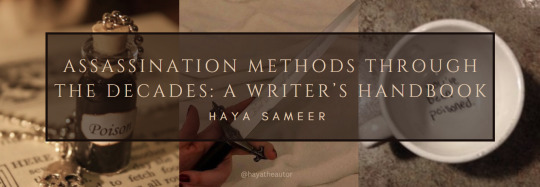
When it comes to writing about assassination, historical accuracy and understanding the evolution of methods can significantly enhance the authenticity and impact of your narrative. This guide is designed to help writers explore the diverse and often brutal methods of assassination that have been used throughout the centuries. From the poisonings of ancient times to the covert killings of medieval assassins, here’s a comprehensive guide bound to give you the perfect inspiration for your assassination scenes.
Ancient and Medieval Assassination Methods
Poisoning
Poisoning is one of the oldest methods of assassination, dating back to ancient civilizations such as Greece, Rome, and Egypt. The allure of poison lies in its ability to kill without physical confrontation, often leaving little trace of the perpetrator.
Common Poisons:
Hemlock: Famously used in the execution of Socrates, hemlock was a slow-acting poison that caused paralysis, leading to death by respiratory failure.
Arsenic: Known as the "inheritance powder," arsenic was a favorite among those seeking to kill discreetly. Its symptoms could be mistaken for natural illness, making it a popular choice in political and familial power struggles.
Belladonna: Also known as deadly nightshade, belladonna was used in both small and large doses to incapacitate or kill. The poison caused hallucinations, dilated pupils, and eventually death.
Historical Examples:
Socrates (399 BC): The Greek philosopher was sentenced to death by drinking a concoction containing hemlock, a method chosen for its relative humanity compared to other executions.
Emperor Claudius (54 AD): It is widely believed that the Roman Emperor Claudius was poisoned by his wife, Agrippina, using a dish of poisoned mushrooms to secure her son Nero's place on the throne.
Administration Methods:
Poisons were often mixed into food or drink, applied to the skin via ointments, or even introduced into the body through small, concealed needles. Assassins needed to be knowledgeable in the art of dosage to ensure a successful kill without immediate detection.
Symptoms:
Victims of poisoning would often suffer a range of symptoms depending on the poison used. These could include severe abdominal pain, vomiting, diarrhea, convulsions, and eventually, death. The slow progression of symptoms allowed the assassin time to escape, and in many cases, the cause of death was not immediately apparent, lending an air of mystery to the assassination.
Bladed Weapons
Before the advent of firearms, blades were the primary tools of assassins. Daggers, swords, and other sharp instruments were favored for their portability and effectiveness in close combat situations.
Types of Blades:
Daggers: Small, easily concealed, and lethal at close range, daggers were the weapon of choice for many assassins. The Roman pugio and the medieval stiletto were particularly popular.
Swords: Larger and more visible, swords were often used in assassinations where the element of surprise was not necessary, such as in the heat of battle or a public execution.
Kris: A wavy-edged dagger used in Southeast Asia, the kris was known for its spiritual significance as well as its lethality.
Famous Assassinations:
Julius Caesar (44 BC): Perhaps the most famous assassination in history, Caesar was stabbed 23 times by a group of Roman senators led by Brutus and Cassius. The attack was swift and brutal, demonstrating the effectiveness of a well-coordinated knife attack.
King Duncan (11th century): The assassination of King Duncan by Macbeth (as famously dramatized by Shakespeare) is an example of a stealthy, intimate kill using a blade, where the act was both personal and symbolic.
Techniques:
Assassins using bladed weapons often relied on stealth, speed, and precision. A well-placed stab to the heart, throat, or kidneys could kill instantly or within moments, leaving the assassin time to escape. In some cultures, assassins were trained in martial arts that emphasized quick, lethal strikes.
Weapon Concealment:
Blades were often concealed in clothing, boots, or even within the folds of long hair or turbans. The art of hiding a weapon until the crucial moment was key to the success of many assassinations.
Strangulation and Garroting
Strangulation was another favored method of assassination in ancient and medieval times, especially for those who sought to avoid bloodshed or noise. The garrote, a weapon used to strangle a victim, was particularly effective in this regard.
Tools Used:
Garrote: A length of wire, cord, or fabric used to strangle a victim from behind. The garrote was silent, deadly, and could be easily concealed, making it a popular choice for assassins throughout history.
Hands: In cases where no weapon was available, assassins might rely on their own hands to strangle a victim. This method required physical strength and proximity but could be effective in the right circumstances.
Historical Examples:
Sicarii (1st century AD): A group of Jewish zealots who used short daggers to stab Roman collaborators in crowded places. The Sicarii were also known for strangling their enemies with garrotes.
Medieval Europe: Strangulation was sometimes used as a method of execution for nobles, where a public beheading or hanging might be considered dishonorable.
Execution:
The assassin would typically approach the victim from behind, loop the garrote around their neck, and tighten it quickly and forcefully, cutting off the victim's air supply. Death would occur within minutes due to asphyxiation or a broken neck.
Advantages and Risks:
The main advantage of strangulation was its silence. Unlike a stabbing or poisoning, strangulation could be done without alerting others nearby. However, it required physical strength and a certain level of risk, as the victim might struggle or fight back.
Renaissance and Early Modern Era
Firearms
The Renaissance and early modern era marked a significant turning point in the history of assassination methods with the introduction of firearms. Gunpowder, first developed in China, made its way to Europe and fundamentally changed the dynamics of warfare and personal combat, including assassination.
Introduction of Gunpowder and Early Firearms in Assassinations:
The development of gunpowder-based weapons provided assassins with a new tool that could kill from a distance, reducing the risk of capture. Early firearms such as matchlock and flintlock pistols were bulky and required significant skill to use effectively, but their lethality made them a preferred choice for assassins by the 16th century.
Firearms allowed for quick, deadly strikes that were difficult to defend against, making them ideal for assassinations where the element of surprise was crucial. The loud noise and smoke, however, meant that escape required careful planning.
How Accuracy and Concealability Impacted Methods:
Early firearms were not known for their accuracy, which necessitated close-range attacks. Assassins often had to be within a few feet of their target to ensure a successful hit. As a result, these weapons were usually concealed under cloaks or in specially designed holsters that allowed for a quick draw.
Over time, improvements in gun design, such as rifling and better gunpowder, increased accuracy and allowed for slightly longer-range assassinations. Despite these advancements, concealability remained a critical factor, as firearms were often large and unwieldy compared to daggers or poison.
Key Assassinations Involving Firearms:
Assassination of King Henry IV of France (1610): King Henry IV was assassinated by François Ravaillac, a Catholic fanatic who stabbed the king while his carriage was stopped in traffic. While this was a stabbing, the period saw a rise in the use of firearms for such purposes. Henry IV's era was marked by religious turmoil, where firearms began to play a role in political assassinations.
Assassination of William the Silent (1584): William I of Orange, also known as William the Silent, was assassinated by Balthasar Gérard using a handgun. This marked one of the first successful assassinations of a prominent figure using a firearm, demonstrating the growing popularity of this method during the Renaissance.
Poison Rings and Needles
The Renaissance period also saw the refinement of more discreet methods of assassination, particularly the use of poison rings and needles. These tools allowed for covert poisoning, often in social settings where other weapons might not be feasible.
Discreet Poisoning Techniques:
Poison Rings: These rings contained a small hidden compartment that could hold a lethal dose of poison. The wearer could discreetly slip poison into a drink or onto food with a simple flick of the ring’s lid. Poison rings were popular among nobility and were often used in court intrigues where open violence would have been impossible.
Poison Needles: These were small, sharp needles often coated with a fast-acting poison. They could be hidden in clothing or other objects and used to deliver a quick, often unnoticed prick that would introduce the poison into the victim’s bloodstream. Needles were ideal for use in crowded settings, such as royal courts or banquets, where the assassin could blend into the crowd after delivering the fatal dose.
Notable Instances of Usage:
Lucrezia Borgia (1480-1519): While the extent of her involvement in poisoning is debated, Lucrezia Borgia, a member of the infamous Borgia family, is often associated with the use of poison rings to eliminate her political enemies. The Borgia family’s reputation for cunning and ruthlessness made poison one of their favored tools for securing power.
Catherine de' Medici (1519-1589): The French queen consort and mother to several kings of France, Catherine de' Medici, was rumored to have employed poison rings and needles to remove rivals and control court politics during the Wars of Religion in France.
Explosives
The early use of explosives in assassination attempts represented a shift towards more destructive and indiscriminate methods of killing, often targeting not just the primary victim but also anyone nearby. Explosives became a favored tool in situations where a dramatic statement was intended, or where traditional methods of assassination were not feasible.
The Early Use of Explosives in Assassination Attempts:
Explosives were first used in assassination attempts during the Renaissance and early modern periods, although their use was limited by the difficulty of creating and handling reliable explosive devices. Gunpowder was the primary explosive material, and it required careful handling to avoid premature detonation.
The use of explosives was often tied to larger political or religious motivations, as the collateral damage caused by an explosion could have a significant psychological impact on the population or ruling class.
The Effectiveness and Risks Involved:
Explosives were highly effective in causing mass casualties and instilling fear, but they also carried significant risks for the assassin. Improper handling could result in accidental detonation, and the use of explosives often made it difficult for the assassin to escape unnoticed.
The unpredictability of early explosives also meant that they could fail to detonate or cause less damage than intended, leaving the assassin vulnerable to capture and execution.
Historical Example:
The Gunpowder Plot (1605): One of the most famous early uses of explosives in an assassination attempt was the Gunpowder Plot, in which a group of Catholic conspirators, including Guy Fawkes, attempted to blow up the House of Lords during the State Opening of Parliament, with the aim of killing King James I and much of the Protestant aristocracy. The plot was foiled, but it demonstrated the potential of explosives as a tool for political assassination.
The Industrial Revolution and Early 20th Century
Sniper Rifles
The Industrial Revolution brought about significant advancements in weaponry, including the development of sniper rifles. These long-range firearms allowed assassins to strike from a distance, often without being seen or heard.
The Rise of Long-Range Assassinations:
Sniper rifles were designed for accuracy over long distances, enabling assassins to kill targets from hundreds of meters away. This development allowed for greater safety and discretion, as the assassin could remain hidden while observing the target through a scope.
The advent of rifling, which gave bullets a stable, spinning motion, greatly improved accuracy and range. Coupled with telescopic sights, these rifles became the preferred tool for military and political assassinations during the late 19th and early 20th centuries.
Famous Cases:
Assassination of Archduke Franz Ferdinand (1914): Although Archduke Franz Ferdinand was ultimately killed by a handgun, the era in which he was assassinated saw the rise of snipers as a significant threat. The tensions and technologies of the time set the stage for future political assassinations using sniper rifles.
Assassination of President John F. Kennedy (1963): Although beyond the early 20th century, the assassination of JFK by a sniper is a prominent example of how sniper rifles became synonymous with political killings. This event marked a turning point in the history of assassination, highlighting the lethal effectiveness of long-range firearms.
Car Bombs
The introduction and evolution of vehicular explosives, particularly car bombs, added a new dimension to assassination tactics in the 20th century. Car bombs became a favored method due to their potential for mass destruction and the ability to target individuals in transit.
Introduction and Evolution of Vehicular Explosives:
The use of car bombs began in earnest during the early 20th century, particularly in conflicts where traditional methods of assassination were either too risky or ineffective. These bombs could be planted in vehicles and detonated remotely, offering a high degree of control over the timing and impact of the explosion.
Over time, car bombs became more sophisticated, with the addition of remote triggers, time delays, and increased explosive power. They were used not only in targeted assassinations but also in acts of terrorism aimed at destabilizing governments or instilling fear in the populace.
Techniques for Planting and Detonating:
Planting a car bomb required detailed planning, as the vehicle needed to be accessed and rigged with explosives without arousing suspicion. Detonation methods varied from simple timed fuses to complex remote-controlled devices, allowing the assassin to maintain distance from the blast.
The challenge for assassins was ensuring the target was inside or near the vehicle at the moment of detonation. This often involved careful observation of the target’s routines and the use of decoys or distractions to ensure the bomb’s effectiveness.
Chemical and Biological Agents
The 20th century saw the development and use of more advanced chemical and biological agents in assassinations. These methods, often invisible and insidious, allowed for killings that were difficult to trace and could be disguised as natural causes.
Use of More Advanced Poisons and Toxins:
With advancements in chemistry and biology, assassins gained access to a range of deadly substances that could kill quickly or slowly, depending on the agent used. Toxins like ricin, cyanide, and various nerve agents became tools of state-sponsored assassinations, particularly during the Cold War.
Chemical agents could be introduced through food, drink, or even via contact with the skin or inhalation, making them versatile and deadly. Biological agents, on the other hand, could cause diseases that mimicked natural illnesses, allowing assassins to kill without immediate suspicion.
Historical Examples:
Ricin: Ricin, a highly potent toxin derived from castor beans, was famously used in the assassination of Bulgarian dissident Georgi Markov in 1978. Markov was attacked with a modified umbrella that injected a tiny pellet containing ricin into his leg, leading to his death a few days later.
Cyanide: Cyanide has been used in various assassinations due to its rapid action and high lethality. One of the most notorious uses of cyanide was in the mass suicide-murder in Jonestown in 1978, where members of the Peoples Temple ingested cyanide-laced punch, although this was not an assassination in the traditional sense, it demonstrated the deadly effectiveness of the poison.
These innovations in assassination methods during the Industrial Revolution and early 20th century reflected the growing complexity of warfare and espionage, as well as the increasing role of technology in shaping the tactics of assassins.
Modern and Contemporary Assassination Methods
Silenced Firearms
In the modern era, the evolution of silenced firearms, or firearms equipped with suppressors, has played a significant role in covert assassinations. The suppressor, commonly known as a silencer, reduces the noise and muzzle flash of a firearm, allowing assassins to operate with a higher degree of stealth.
The Evolution of Suppressors and Their Use in Covert Assassinations:
Suppressors were first developed in the early 20th century and have since become a staple in the arsenal of assassins. Initially, suppressors were bulky and limited to specific firearms, but advancements in technology have made them more compact, effective, and adaptable to a wide range of weapons.
Silenced firearms are ideal for close-quarters assassinations where discretion is paramount. The reduced noise levels prevent immediate detection, giving the assassin time to escape or even carry out multiple hits without alerting nearby individuals.
High-Profile Cases:
Cold War Assassinations: During the Cold War, silenced firearms were frequently used by intelligence agencies on both sides of the Iron Curtain. The KGB, CIA, and MI6, among others, employed suppressors in various covert operations to eliminate targets without drawing attention.
Georgi Markov (1978): Although Markov’s assassination in London involved a poison-tipped umbrella, the use of suppressors was prevalent in the same period for similar covert operations. This era exemplified the silent, precise methods preferred by state-sponsored assassins.
Remote-Controlled Devices
The rise of remote-controlled devices, including drones and other modern technologies, has introduced a new dimension to assassination methods. These devices allow assassins to strike from a distance, often from thousands of miles away, with precision and minimal risk.
Drones and Other Modern Technologies in Assassination:
Drones, equipped with cameras and weapons, have revolutionized modern warfare and assassination. These unmanned aerial vehicles can be operated remotely, providing real-time surveillance and the ability to deliver lethal force with pinpoint accuracy. Drones are particularly effective in targeting individuals in difficult-to-reach or heavily guarded locations.
Other remote-controlled devices, such as bombs or cars rigged to detonate via remote, offer similar advantages. These methods allow the assassin to maintain a safe distance from the target, reducing the likelihood of capture or identification.
Notable Instances in Recent History:
Qasem Soleimani (2020): One of the most high-profile drone assassinations in recent history was the killing of Iranian General Qasem Soleimani by a U.S. drone strike in Baghdad. This event highlighted the capabilities of drone technology in executing precise, targeted killings with global political implications.
The Killing of Anwar al-Awlaki (2011): The American-born cleric and al-Qaeda leader was targeted and killed by a drone strike in Yemen, marking a significant moment in the use of remote-controlled devices in the War on Terror.
Cyber-Assassination
As technology continues to advance, the concept of cyber-assassination has emerged as a new frontier in covert operations. This method involves using cyber means to assassinate individuals, such as hacking into medical devices or other critical systems.
The Concept of Assassination Through Cyber Means:
Cyber-assassination leverages the vulnerabilities in modern technology, particularly medical devices like pacemakers or insulin pumps, which can be hacked to deliver a fatal outcome. This method represents a shift from physical to digital assassination, where the target can be killed without the assassin ever being in the same country, let alone the same room.
Cyber-attacks can also target critical infrastructure, leading to deaths through indirect means such as causing traffic accidents by hacking self-driving cars or disrupting life support systems in hospitals.
Ethical and Legal Implications:
The rise of cyber-assassination raises significant ethical and legal questions. Unlike traditional assassination methods, which can be physically traced, cyber-attacks are often difficult to attribute, making accountability a major issue. This anonymity can lead to increased use of such methods by state and non-state actors alike.
Legal frameworks have yet to fully catch up with the technological realities of cyber-assassination. As a result, there is a grey area regarding the legality of such actions, particularly in the context of international law and the rules of engagement in warfare.
Assassination Methods by Region
Europe
Throughout history, Europe has seen a variety of assassination methods, each influenced by the region’s diverse cultures, political climates, and technological advancements.
Specific Methods Popular in Different European Countries Across Various Eras:
In medieval Europe, poison was a favored method, particularly among the Italian nobility. The use of poisoned food, drink, and even clothing was common in the courts of Italy, where political intrigue and betrayal were rife.
During the French Revolution, the guillotine became the symbol of state-sanctioned assassination, used to eliminate political enemies swiftly and publicly. The Reign of Terror saw the use of this method to instill fear and maintain control.
In more recent history, Eastern Europe, under Soviet influence, saw the use of more covert methods, such as radioactive poisoning, exemplified by the assassination of Alexander Litvinenko in 2006 in London.
Asia
Asia's vast and diverse history has given rise to a wide range of assassination techniques, each influenced by the unique cultural, political, and historical contexts of its various regions.
South Asia (India, Pakistan, and Surrounding Areas):
In ancient and medieval India, assassination was often a tool used in dynastic struggles. One notable method was the use of Vishkanya—young women supposedly trained from childhood to tolerate and deliver poison. These women were allegedly used to assassinate powerful enemies by poisoning them through intimate contact.
During the Mughal Empire, political intrigue often involved the use of poisoning and covert killings to eliminate rivals. The struggle for succession in royal courts frequently led to the use of assassination as a means to secure power.
East Asia (China, Korea, Japan):
Ninja Tactics (Japan): In feudal Japan, ninjas were often employed as assassins due to their skills in stealth, espionage, and the use of a variety of weapons. Techniques such as silent killing with swords, blow darts, and the use of shuriken (throwing stars) were common. Ninjas were masters of disguise and could infiltrate enemy strongholds to eliminate targets without detection.
While ninja tactics are widely known, East Asia’s history of assassination is much broader. In ancient China, assassins were sometimes employed by rival states or within the imperial court to eliminate threats. Famous historical accounts like the attempted assassination of Qin Shi Huang, the first Emperor of China, highlight the role of assassins in shaping the region’s history.
Korea’s history also includes instances of political assassinations, particularly during the Joseon Dynasty, where court intrigue and power struggles often resulted in the discreet elimination of rivals.
East Asia (China, Korea, Japan):
Poison Darts: In regions like Borneo and the Philippines, blowguns with poison-tipped darts were used by indigenous tribes to silently kill enemies. These weapons were effective for their stealth and the ability to deliver deadly toxins without the need for close combat.
Central Asia:
In Central Asia, particularly during the time of the Silk Road, assassins were sometimes employed by powerful khans and warlords to secure trade routes and eliminate threats. Assassination was a strategic tool in maintaining control over vast and often unruly territories.
Middle East
The Middle East has a rich and complex history where assassination has played a role in political and dynastic power struggles, often tied to the region’s diverse empires and cultural traditions.
Historical Assassinations Involving Political Power Struggles:
The Middle East, home to some of the world’s oldest civilizations, has seen assassinations employed as a tool of political maneuvering for millennia. In ancient Mesopotamia, assassinations were sometimes used to secure thrones and eliminate rivals within royal families.
During the time of the Ottoman Empire, the practice of fratricide—where newly crowned sultans would eliminate their brothers to prevent future challenges to their rule—was a brutal form of state-sanctioned assassination.
The Byzantine Empire, centered in what is now modern-day Turkey, also witnessed political assassinations as a common method for securing power, with emperors and high-ranking officials often falling victim to their rivals.
The Americas
The Americas, particularly the United States and Latin America, have experienced a range of political assassinations, often with far-reaching consequences.
Political Assassinations in the U.S. and Latin America:
In the United States, the assassinations of presidents like Abraham Lincoln, John F. Kennedy, and civil rights leaders such as Martin Luther King Jr. have left indelible marks on the nation’s history. These high-profile killings were often carried out by lone gunmen or small conspiracies and had profound impacts on the country’s political landscape.
Latin America has seen numerous political assassinations, often linked to dictatorial regimes, revolutionary movements, and drug cartels. Figures like Che Guevara and Salvador Allende were assassinated or killed under controversial circumstances, reflecting the volatile political environments in many Latin American countries during the 20th century.
This overview of assassination methods by region highlights the diverse and evolving tactics used across different parts of the world, shaped by the cultural, political, and technological contexts of each region.
Common Misconceptions About Assassination
The Myth of the Clean Kill
In fiction, assassinations are often depicted as clean and precise, with the target silently slumping over after a single blow or shot. However, in reality, even well-planned assassinations can go awry. Bodies don’t always react predictably to trauma, and factors like adrenaline, the environment, and unexpected movements can complicate even the most meticulously planned kill. A supposedly lethal blow may not immediately incapacitate the target, leading to prolonged struggles, noise, and potential witnesses.
Silencers and Stealth
In movies and TV shows, silencers (or suppressors) are often shown completely muffling the sound of a gunshot, reducing it to a mere whisper. In reality, while suppressors do reduce the noise, they don’t make it silent. The sound of a suppressed gunshot can still be quite loud, akin to a clap or the popping of a balloon, and depending on the environment, it may still attract attention. Additionally, the sound of the bullet impact and mechanical noise from the firearm are not silenced, further dispelling the myth of a completely stealthy kill.
Poison Timing
Popular media often portrays poisons as acting instantaneously, with victims collapsing mere seconds after ingestion or injection. In truth, the effects of poisons vary widely depending on the substance, dose, and the victim’s physiology. Some poisons, like cyanide, can act within minutes, but others might take hours or even days to fully incapacitate or kill. Symptoms might develop gradually, and in some cases, the victim might not even realize they’ve been poisoned until it’s too late. This misconception can lead to unrealistic portrayals of poisoning in fiction.
Resources
Books
Recommended Reading for Research on Assassination Techniques:
"Assassination Generation" by Lt. Col. Dave Grossman – This book explores the psychology of killing and its portrayal in the media, providing insight into both real-life and fictional assassinations.
"Hitmen: The True Stories of Assassins, Contract Killers, and Political Hired Guns" by Nigel Cawthorne – A collection of real-life accounts detailing the methods and motives of professional assassins throughout history.
"The Art of Political Murder: Who Killed the Bishop?" by Francisco Goldman – A detailed investigation into the assassination of Bishop Juan Gerardi in Guatemala, offering a deep dive into the intersection of politics and murder.
Documentaries
Visual Resources That Depict Historical Assassinations:
"Killing Oswald" – A documentary that explores the conspiracy theories surrounding the assassination of President John F. Kennedy, delving into the methods and motives behind one of the most famous assassinations in history.
"The Men Who Killed Kennedy" – A controversial documentary series that investigates various theories about the assassination of JFK, offering insights into different assassination methods and their implications.
"Assassins: The Story of Medieval Hitmen" – This documentary provides an in-depth look at the history of assassins in the medieval period, focusing on their training, methods, and the political impact of their actions.
Looking For More Writing Tips And Tricks?
Are you an author looking for writing tips and tricks to better your manuscript? Or do you want to learn about how to get a literary agent, get published and properly market your book? Consider checking out the rest of Quillology with Haya Sameer; a blog dedicated to writing and publishing tips for authors! While you’re at it, don’t forget to head over to my TikTok and Instagram profiles @hayatheauthor to learn more about my WIP and writing journey!
#hayatheauthor#haya's book blog#haya blogs#writing community#quillology with haya#writing tools#writer things#writing advice#writer community#writing techniques#writing prompt#writing stuff#creative writing#ya writing advice#writing tips and tricks#writer tools#writers of tumblr#writer blog#writers block#quillology with haya sameer#writers on tumblr#writerscommunity#writer stuff#author help#author advice#author#writing inspiration#writeblr#author things
449 notes
·
View notes
Text
I think a lot of the "humans are space orcs" stuff really underestimates or misunderstands evolution.
Like yes, there are going to be differences between different organisms and stuff and some will have abilities or tolerances that others don't but... generally speaking nothing about us would be a shock to a spacefaring species.
Any planet that develops life, especially if it has reason to evolve into something smart enough to make a spaceship, is going to have competition over resources and stuff. It's going to have some environmental shit going on probably too.
So it would be more like "oh neat, your species is way better at X than us. We can Y better than you though" rather than "WHAT? Your people can WALK REALLY FAR??!?!!!?!?" which is what a lot of these posts kinda sound like.
Not that there wouldn't be surprises - of course there would be - but they would understand evolution and have lots of different critters on their own world to look to for examples. "Oh, you use use specialized cells to detect wavelengths of energy between certain ranges and you call that 'the visible spectrum'? Neat, yeah, we have tools that can do that and there's a type of flying creature on our world that does that." and we'd be all "Oh cool you can detect electrical fields and use that to communicate and detect each other? Yeah, we have some animals that do that to some extent though it seems like you're way better at it. Very cool, we can probably work together to convert light to electrical signals and vice versa so we can communicate."
The social/cultural stuff, general ways they think, etc. would be the part where everything would be totally alien.
#humans are space orcs#humans are weird#humans are space oddities#humans are deathworlders#humans are space australians#humans fuck yeah
2K notes
·
View notes
Text
Apes are a kind of monkey, and that's ok
This is a pet peeve of mine in sci comm ESPECIALLY because many well respected scientific institutions are insistent about apes and monkeys being separate things, despite how it's been established for nearly a century that apes are just a specific kind of monkey.
Nearly every zoo I've visited that houses apes has a sign somewhere like the one below that explains the supposed distinction between the two groups, focusing on anatomy instead of phylogeny.
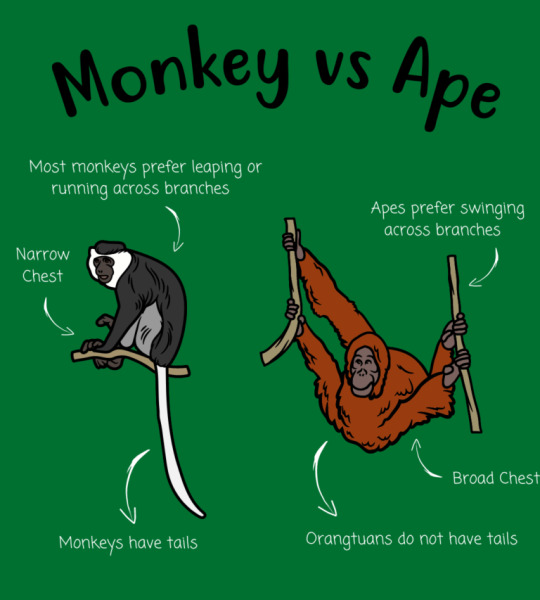
(Every time I see a graphic like this I age ten years) Movies even do this, especially when they want to sound credible. Take this scene from Rise of the Planet of the Apes:
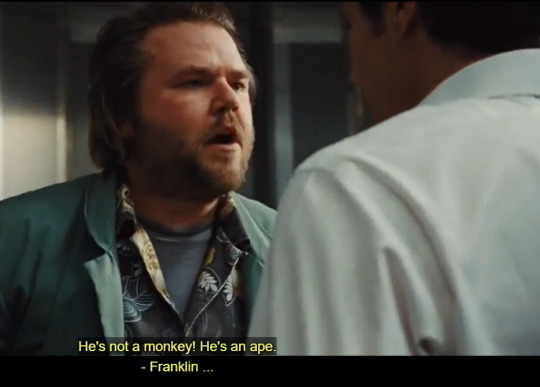
This guy Franklin is presented as the authority on apes in this scene, and he treats James Franco calling a chimpanzee a monkey like it's insulting.
But when you actually look at a primate family tree, you can see that apes are on the same branch as Old World monkeys, while New World monkeys branched off much earlier.

(I'm assuming bushbabies are included as "lorises" here?)
To put it simply, that means you and I are more closely related to a baboon than a baboon is to a capuchin.

Either the definition of monkey includes apes OR we can keep using an anatomical definition and Barbary macaques get to be an ape because they're tailless.
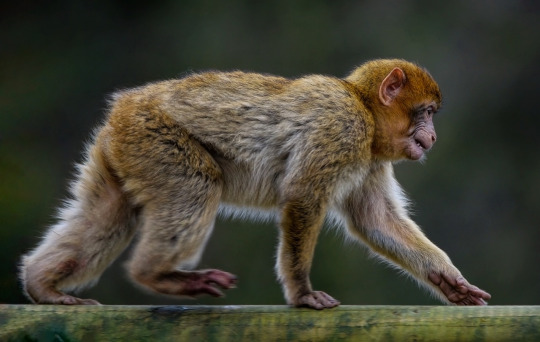
"I've got no tails on me!"
SO
Why did all this happen? Why did we start insisting apes are monkeys, especially considering the two words were pretty much interchangeable for centuries? Well I've got one word for ya...

This the attitude that puts humans on a pedestal over other life on Earth. That there are intrinsically important features of humanity, and other living things are simply stepping stones in that direction.
At the dawn of evolutionary study, anthropocentrism was enforced by using a model called evolutionary grades. And boy howdy do I hate evolutionary grades.
Basically, a grade is a way of defining a group of animals by using anatomical "complexity". It's the idea that evolution has milestones of importance that, once reached, makes an organism into a new kind of thing. You can almost think of it like evolutionary levels. An animal "levels up" once it gains a certain trait deemed "complex".
You can probably see the issue here; that complexity is an ephemeral idea defined through subjectivity, rather than based off anything truly observable. What makes walking on 2 legs more complex than walking on four? How are tails less complex than no tails? "Complexity" in this context is unmeasurable, therefore it is unscientific. That's why evolutionary grades suck and I never want to look at one.
For primates, this meant once some of them lost their tails, grew bigger brains, and started brachiating instead of leaping, they simply "leveled up" and became apes. Despite the early recognition that apes were simply a branch of the Old World monkey family tree (1785!), the idea of grades took precedent over the phylogenetic link.
In the early years of primatology, humans were even seen as a grade "above" apes, related but separated by our upright stance and supposed far greater intelligence (this was before other apes were recognized tool users).

It wasn't until the goddamn 1970s that it was recognized all great apes should be included in the clade Hominidae alongside humanity. This was a major shift in thinking, and required not just science, but the public, to recognize just how close we are to other living species. It seems like this change has, thankfully, happened and most institutions and science respecting folks have accepted this fact. Those who don't accept it tend to have a lot more issues with science than only accepting humans as apes.

And now, we come to the current problem. Why is there a persistent idea that monkeys and apes are separate?
I want to make it clear I don't believe there was a conscious movement at play here. I think there's a lot of things going on, but there isn't some anti-monkey lobby that is hiding the truth. I think the problem is more complicated and deals with how human brains and human culture often struggle to do too many changes at once.
Now, I haven't seen any studies on this topic, so everything I say going forward is based on my own experience of how people react to learning apes (and therefore, humans) are monkeys.
First off, there is a lot of mental rearranging you have to do to accept humans as monkeys. First you, gotta accept humans as apes, then you have to stop thinking in grades and look at the family tree. Then you have to accept that apes are on the Old World monkey branch, separate from the New World monkeys.
That's a lot of steps, and I've seen science-minded zoo educators struggle with that much mental rearranging. And even while they accept this to an extent, they often find it even harder to communicate these ideas to the public.
I think this is a big reason why zoos and museums often push this idea the hardest. Convincing the public humans are apes is already a challenge, teaching them that all apes are monkeys at the same time might seem impossible.
I believe the other big reason people cling to the "apes-aren't-monkeys" idea is that it still allows for that extra bit of comforting anthropocentrism. Think of it this way; anthropocentrism puts humans on a pedestal. When you learn that humans are apes, you can either remove the pedestal and place humans with other animals, OR, you can place the apes up on the pedestal with humanity. For those that have an anthropocentric worldview, it can actually be easier to "uplift" the apes than ditch the pedestal.
Too make things worse, monkeys are such a symbol of a "primitive" animal nature that many can't accept raising them to the "level" of humanity, but removing the pedestal altogether is equally painful. So they hold tight to an outdated idea despite all the evidence. This is why there's often offense taken when an ape is called a monkey. It's tantamount to someone calling you a monkey, and that's too much of a challenge to anthropocentrism.
Personally, I think recognizing myself as a monkey is wonderful. Non-ape monkeys are as "complex" as any ape. They make tools, they have dynamic social groups, they're adapted to a wide range of environments, AND they have the best hair of all primates.
I think we should be honored to be considered one of them.
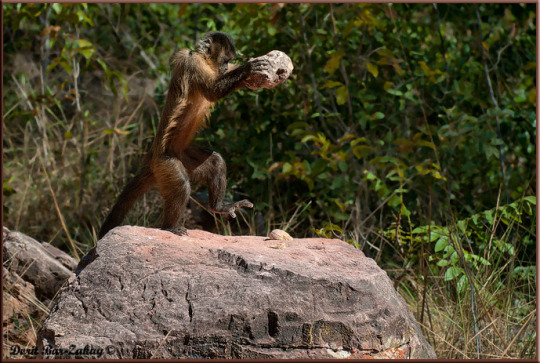
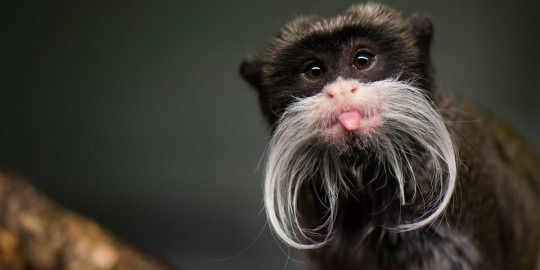

3K notes
·
View notes
Text
⊹ . ݁˖ . ݁pac reading 。⋆。 ゚
ೄྀ ⊹ ࣪ ˖ 𝒓𝒂𝒏𝒅𝒐𝒎 𝒂𝒅𝒗𝒊𝒄𝒆
ʚ 𝒇𝒓𝒐𝒎 𝒕𝒉𝒆 𝒕𝒂𝒓𝒐𝒕 ೄྀ 𓏲༄
some short tarot readings aiming to provide information that could be useful if you're going thru hard times. this is completely random, take what resonates leave what doesn't, hopefully there's something useful in here <3 .
{ pngs by @20sk-smoke }{dividers by @d-oie & @cafekitsune}




pile one pile two pile three

.
.‧͙˚ *༓ scroll down for the readings ⋆ִ ‧͙⁺˚
.


˚˖𓍢ִ໋ ✧ pile number one ˚.⋆
You are facing a moment of imbalance due to a certain sense of harmony getting lost among the overwhelming feelings of chaos and uncertainty. You are almost aware of the new emotionally constructive opportunities on the horizon, but you also fear that you won't make it out of whatever situation is blocking your path towards abundance. Progress might not be happening at the speed you desire, but it's certain that your achievements are not meant to be easily seen by yourself, you need to allow yourself to be grateful now instead of only allowing gratitude when you reach what could be seen as a “fully achieved” goal. Absolute success is not something that's eternal, it's a feeling that lasts too little. This reality shouldn't put you down as the opportunity for constant evolution gives depth to personal experiences. When possible, try to find comfort in the spiritual growth opportunities, don't hyperfixate on what's not available for you to do at the moment as there's help coming your way. There's no shame in letting others care for you when you need assistance to get back on your feet, specially during this moment where you might be drawn to seeking deeper connections with people who are on the same path you are.

˚˖𓍢ִ໋ ✧ pile number two ˚.⋆
You might be feeling overly pressured to react to abrupt changes in your routine or new demands that exceed the limits of your comfort zone. It seems as if you feel that life is asking for too much and you have to options other than to give up on your ideals or your habits and surrender to these new expectations. Your confidence is not meant to be shattered because of such demands and situations, it’s meant to become stronger by creating new ways of asserting yourself as the determined and hard working person you are. It would be completely understandable if you became defensive, but this defensiveness will become a tiring part of yourself if you are not able to pick your battles more wisely. You have the mental strength and the creativity to adapt into different ways of channeling your energy, but it will take you some time and persistence to get a sense of how exactly you are meant to do so. This is a great moment to trust in your resilience. If you are not feeling confident enough, you need to trust yourself and your ability to rebuild your life even in situations where you are overwhelmed by all sorts of demands that might seem unrealistic now, but you are quite capable of finding the right tools to face them.

˚˖𓍢ִ໋ ✧ pile number three ˚.⋆
During this moment of your journey, there’s still a lot of hard work to do in regards to your inner world, your ideals, your values and the hard questions on why you are actually persisting and doing said hard work. You are already quite far in terms of your personal development and in your experiences, but at this point you are facing doubts that do not require knowledge that comes from outside of yourself, you need to have more moments of introspection in your life. So far, you have a lot of good tools and foundations for material success, yet your mindset needs further development in order for these tools to bring material abundance and spiritual fulfillment. Most of the confusion and feelings of disorientation you could be facing right now, are meant to guide you towards getting the ability to make sure your thoughts, your feelings and your actions are properly aligned with your goals. You are probably amazing at knowing what to do, but you need your actions to also serve your intellectual and emotional needs as much as they serve your goals, by taking this into consideration, your journey towards success and fulfillment will become more satisfactory, as you will reach your goals and actually feel a whole sense of achievement that goes beyond just doing the thing in question.

masterpost ✶ pac readings ✶ ko-fi page
✶ ✶ ✶ personal reading services ✶ ✶ ✶


#tarot blog#tarotblr#tarot reading#pick a card reading#daily tarot#pick a card#pac reading#tarot#pac tarot#tarot pac#pick a pile#pick a photo#pick a picture#self growth#spiritual journey#tarot and astrology#tarot advice#coquette aesthetic#coquette blog#girlblogger#self love#self care#mental wellness#self worth#healing journey#paid tarot readings#love tarot reading#free tarot readings#free tarot reading#tarot readings
187 notes
·
View notes